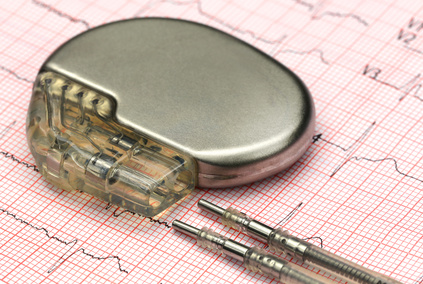Alcohol septal ablation is used to treat patients with obstructive hypertrophic cardiomyopathy. A significant complication in this intervention is atrioventricular block requiring pacemaker implantation in 7% to 20% of cases. Current evidence is limited for clinical results at follow-up for these patients. The aim of this study was to evaluate the results for patients with…
TAVR, More Information Supports Its Use
TAVR has been reported beneficial in the treatment of high and intermediate risk patients but, initially, randomized clinical trials have shown vascular complication and pacemaker implantation rates higher than SAVR in low-risk patients. This will most certainly improve as operator experience and device development advance. This is a randomized 1:1 study including 458 patients receiving…
Minimizing One of Our Major Procedures to a Minimum
In some cases, full atrioventricular (AV) block occurs beyond two days after transcatheter aortic valve replacement (TAVR). This highlights the usefulness of extending monitoring after discharge, particularly in patients who tolerated the procedure well, but meet high-risk criteria. We have made great progress regarding conduction disorders in TAVR, especially after the publication of the consensus…
Validating Consensus on Post TAVR Conduction Disturbances in the Clinical Practice
Little over a year ago, JACC published the expert consensus on the management of post transcatheter aortic valve replacement (TAVR) conduction disturbances. This publication homogenized criteria and was welcomed by operators who, when in doubt, tended to prematurely indicate definite pacemaker implantation or delayed discharge in order to monitor patients. These criteria, however, was nothing…
AHA 2020 | Rise in Early Discharge After TAVR Has the Expected Cost
As hospitalization time after a transcatheter aortic valve replacement (TAVR) is reduced, we are observing a concomitant increase in re-hospitalizations due to conduction disorders. Early discharge is a great step, but it should be noted that conduction disorders can happen beyond 48 hours. A few years ago, pacemaker implantation rates after discharge were about 7%;…
Outpatient Rhythm Monitoring After TAVR Could Save Us from Some Pacemakers?
Delayed high-grade block after transcatheter aortic valve replacement (TAVR) goes unnoticed in patients undergoing TAVR without prior conduction disorders because, most times, it takes place during hospitalization or immediately after the procedure. Right bundle branch block is a risk factor, but it has poor sensitivity for the prediction of high-grade blocks, and there may be…
Post TAVR New Onset Left Bundle Branch Block at Long Term: Worth Our Attention?
After post TAVR mean 3-year follow-up, a new onset persistent left bundle branch block (LBBB) was not associated with higher mortality or hospitalization for cardiac failure according to this study to be published soon in J Am Coll Cardiol Intv. Nevertheless, LBBB was associated to higher risk of definite pacemaker and a negative impact in…
EuroPCR 2019 | Long-Term Follow-Up for New Left Bundle Branch Block After TAVR Is Reassuring with Certain Precautions
Long-term follow-up of patients who underwent transcatheter aortic valve replacement (TAVR) and developed left bundle branch block (LBBB) after the procedure seems reassuring. Although it is not benign, it is associated with more conduction defects, more pacemakers, and worsening ventricular function. Long-term follow-up “partially reassures” the concerns of many physicians about new LBBB after TAVR.…
Modern Valves Reduce the Need for a Pacemaker
Courtesy of Dr. Carlos Fava. Transcatheter aortic valve replacement (TAVR) has already demonstrated benefit for different risk groups, but one of the remaining challenges is the reduction of the need for a pacemaker, which is still high for self-expanding valves compared with expandable balloons. The study enrolled 203 patients with severe aortic stenosis who underwent TAVR with…
Permanent Pacemaker: still TAVR’s Aquila’s Heel
TAVR has shown benefits in high risk patients (prohibitive) and in intermediate risk patients, but the need for permanent pacemaker implantation (PPI) continues to be a soft spot (especially in younger patients) given time of use, eventual replacement and associated complications. Even though there is little information on PPI, pacemakers are not associated with higher mortality, but they…









